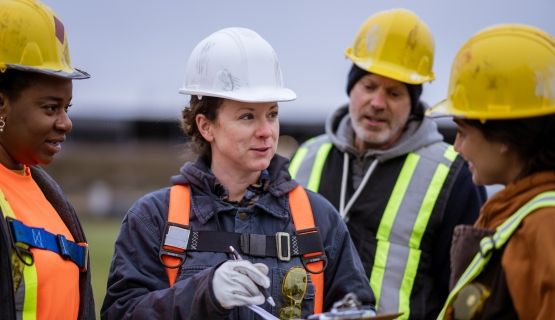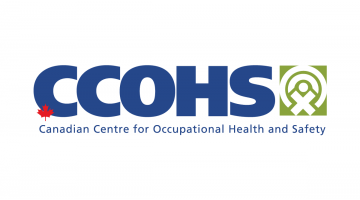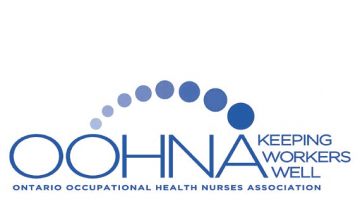Illness/injury prevention
IWH has a long history of conducting research to provide practical guidance to employers, workers, OHS professionals and regulators about what works and what doesn’t in injury or illness prevention. This research targets the injury and illness prevention practices of workplaces, as well as the programs developed by governments, health and safety associations and others to support and motivate workplaces to adopt effective practices.
Featured

At Work article
Differences in firm-level AI use for health and safety
To what extent are Canadian workplaces using artificial intelligence (AI) to help support workers’ health and safety? And what do these workplaces have in common? An IWH study surveyed firms across Ontario and British Columbia to find out.
Published: October 8, 2025

Impact case study
Saskatchewan’s construction safety group uses IWH tool to improve safety culture
This case study details how the Saskatchewan Construction Safety Association (SCSA) members have been analyzing IWH-OPM scores to adjust their safety practices and how SCSA has been using the data to tailor their outreach.
Published: February 10, 2025

IWH in the media
Hand in hand
The debate on the role of unions in influencing workplace safety is as old as unions are. Organized labour, by serving as employee advocates, may have a positive influence on job safety after all, according to a recent Institute for Work & Health (IWH) study.
Published: OHS Canada, November 2015

IWH in the media
Exercise to ease MSD pain
You’ve been proactive, taking steps to manage job stress, and making ergonomic adjustments and enhancements to your work area to protect against musculoskeletal disorders (MSDs), but these steps alone may not be enough. A new study recommends that exercising on the job could be your best defence against upper body MSDs.
Published: Health and Safety Report, November 2015

IWH in the media
The vulnerable worker
The term “vulnerable workers” is used increasingly in occupational health and safety (OHS) to describe those at greater risk of injury. Research at the Institute for Work & Health (IWH) has recently explored whether worker or workplace factors are linked to worker vulnerability. The result is a new 29-item questionnaire that measures the extent to which workers are at increased risk of work-related injury and illness and conceives vulnerability as a function of four distinct dimensions.
Published: OOHNA Journal , October 2015

At Work article
IWH leading indicator tool wins over advocates across Canada
The eight-item IWH-OPM is adopted in several provinces as a measure of health and safety performance in workplaces
Published: August 2015
Journal article
Journal article
The development of a conceptual model and self-reported measure of occupational health and safety vulnerability
Published: Accident Analysis and Prevention, June 2015

Issue Briefing
Divergent trends in work-related and non-work-related injury in Ontario
An IWH study found strongly diverging trends in the annual incidence of occupational injury and non-occupational injury among working-age adults in Ontario from 2004 to 2011. This Issue Briefing highlights opportunities to improve the monitoring of injury across Canada.
Published: June 2015

At Work article
IWH research on vulnerable workers leads to tool for measuring risk factors
29-item survey gauges vulnerability via workplace hazards, policies, procedures and worker awareness.
Published: April 2015
IWH Speaker Series
IWH Speaker Series
Assessing the validity of the IWH-OPM: Workplace case studies
Workplaces and jurisdictions are looking for valid, reliable and practical indicators of occupational health and safety (OHS) performance. In light of this, OHS professionals from prevention system partners in Ontario, in collaboration with the Institute for Work & Health (IWH), developed a leading indicator known as the IWH Organizational Performance Metric (IWH-OPM). Prior testing of the eight-item IWH-OPM suggests it has acceptable internal consistency and structural validity, and is also predictive of future OHS performance (as measured by claims rates). In this plenary, Dr. Basak Yanar, a researcher and lecturer in organizational behaviour at the University of Windsor, reports on a further qualitative study of the IWH-OPM that contributes to the ongoing analysis of its measurement properties. The construct validity of the IWH-OPM was examined through case studies in five organizations, comparing the item and scale scores with observational and interview data on OHS performance. Results indicate good construct validity; that is, organizations that scored high on the scale also had the best OHS practices compared to those that scored lower on the scale.
Published: April 2015
IWH Speaker Series
IWH Speaker Series
Developing a measure of OHS vulnerability
The term "vulnerability" is used increasingly in occupational health and safety (OHS) in Ontario. Although certain groups in the labour market (e.g. younger workers, temporary workers or immigrants) are often labelled as “vulnerable workers,” there is very little discussion about what the broader workplace and occupational factors are that lead to increased risk of injury among these groups, and whether these risk factors are similar across the groups. In this plenary, Dr. Peter Smith, a scientist at the Institute for Work & Health, provides an overview of the conceptual framework of OHS vulnerability. He also shares preliminary findings from a survey capturing different dimensions of OHS vulnerability across a sample of workers in Ontario and British Columbia.
Published: January 2015
Project
Project
Evaluating the impact of mandatory awareness training on occupational health and safety vulnerability in Ontario
In 2014, Ontario legislated mandatory health and safety awareness training for all workers and supervisors. How effective was this training in its early days in reducing vulnerability to risk of work injury? IWH researchers answered this question.
Status: Completed 2018